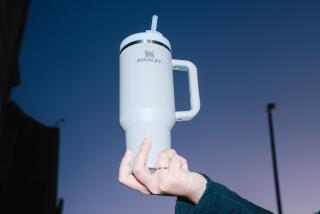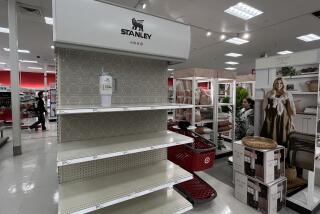Krazy Kat Comic Items Selling Well
- Share via
Question: Recently, the New York Times Sunday Magazine did a nice profile of George Herriman, the artist who created Krazy Kat, which was kind of a cult comic strip in its day. What does his work sell for? I have a chance to buy a couple of his panels.--W.F.
Answer: Herriman’s work has become quite popular and, as you might imagine, very expensive. Dealers have offered his panels for more than $1,000 and, we understand, haven’t had much difficulty in selling his work.
It should go without saying, of course, that when you’re paying megabucks for this kind of artwork you should make every effort to authenticate Herriman’s work.
Q: I have some old collectible fishing equipment, including plugs and poles, that I’m thinking of refinishing. What suggestions do you have?--P.T.
A: From what we’ve read, it’s generally not a good idea to repaint or refinish fishing collectibles. This rule of thumb doesn’t apply to some other areas of collecting, but overhauling fishing equipment could diminish the value of such items.
On a related note, N. S. asked us for the approximate value of bamboo fishing rods, circa 1930 and 1940.
Split-bamboo fly rods were first marketed about the time of the Civil War and later widely distributed throughout the United States. Usually, the producer’s name can be found on a metal part near the handle, which makes it easier for the collector to authenticate the rod and estimate its age.
As in the case of reels and plugs produced a century ago, such fishing equipment is keenly sought by collectors and tends to bring top prices. For example, one catalogue lists a split-bamboo fly rod produced in 1928 at almost $100.
Q: Coca-Cola memorabilia collectors seem to get plenty of publicity, but not a lot appears on collectors who are into other soft-drink items of historical interest.
My wife and I have some vintage Coca-Cola bottles, but we also have collected the soft-drink products of other companies with long American histories, such as Seven-Up. Some of these items, in my opinion, have as great a value as their Coca-Cola counterparts, which receive much more publicity among collectors and columnists.--M.H.
A: Coca-Cola’s colorful history and the well-organized Coke collecting clubs around the country have, indeed, generated tremendous publicity for Coke collectors. But, as you suggest, it’s certainly not the only game in town.
The Seven-Up organization also goes back a number of years, with its roots dating back to the 1920s in St. Louis. Several stories have surfaced about how the soft drink originally received its name. But there seems to be general agreement that the “7” referred to its original seven-ounce bottle.
The “Up,” however, could have come from the company’s advertising pitch--that is, the beverage picked one up. One wag firmly believes, though, that the “Up” was a blatant reference to the belch caused by the carbonated drink.
Whatever the case, Seven-Up collectibles do have a marketplace. Old Seven-Up bottles can change hands for $20 or more, according to dealers. And Seven-Up advertising items, such as clocks and signs, have sold for up to $100.
Date Book
The Los Angeles Historical Bottle Club has scheduled its annual “Antique and Collectible Show” for Sept. 27 (6:30 p.m. to 10 p.m.) and Sept. 28 (9 a.m. to 4 p.m.), at Temple Beth Ami, 3508 Temple Way, West Covina. Show chairman Patt Blauvelt says post cards, advertising, photographs, boxes, Coca-Cola items, tins, telephones, bottles and other collectibles will be on display. Admission is $1.50. For additional information, call (818) 332-6751.
Ronald L. Soble cannot answer mail personally but will respond in this column to questions of general interest about collectibles. Do not telephone. Write to Your Collectibles, You section, The Times, Times Mirror Square, Los Angeles 90053.


